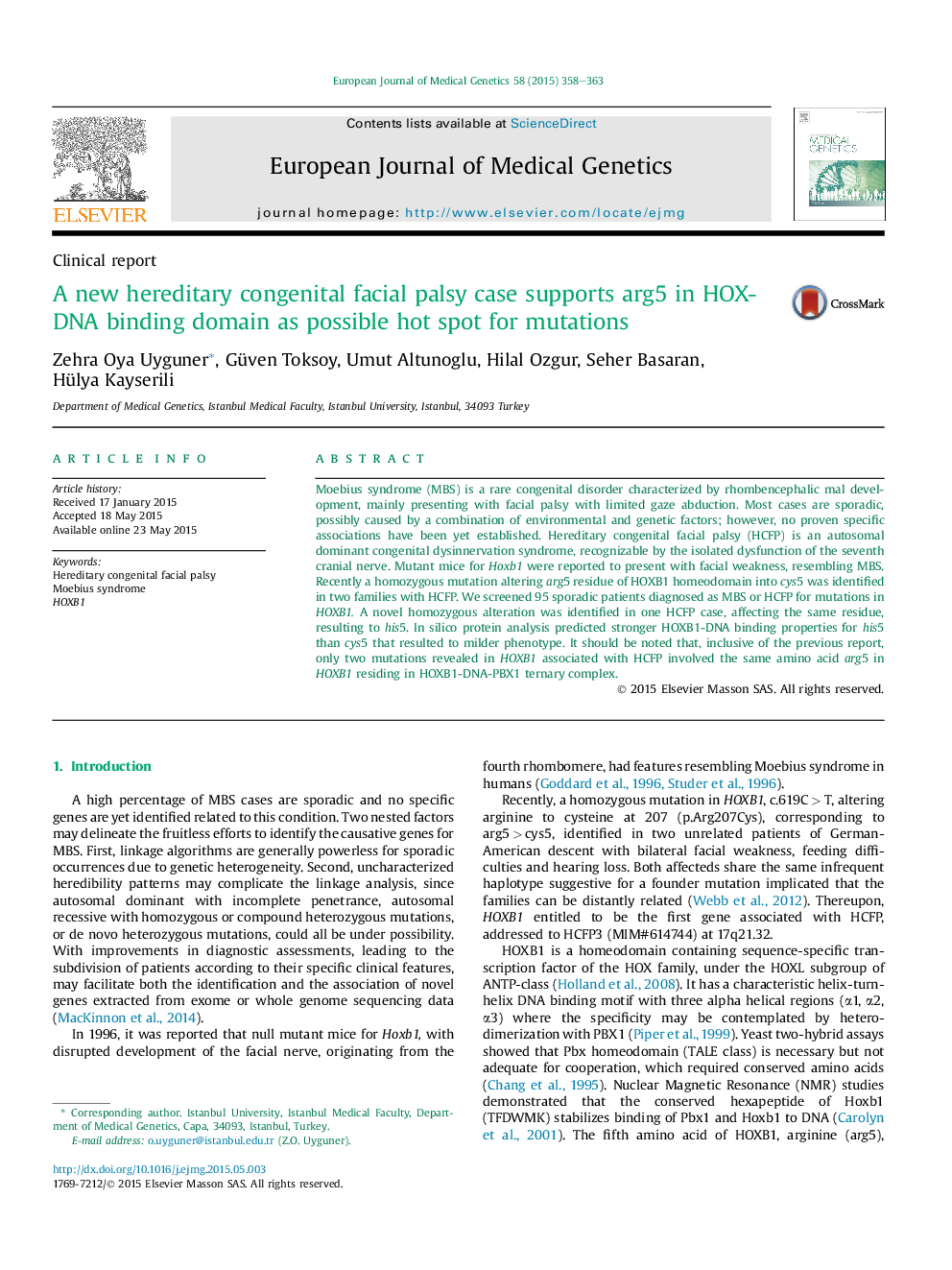| Article ID | Journal | Published Year | Pages | File Type |
|---|---|---|---|---|
| 2813794 | European Journal of Medical Genetics | 2015 | 6 Pages |
Moebius syndrome (MBS) is a rare congenital disorder characterized by rhombencephalic mal development, mainly presenting with facial palsy with limited gaze abduction. Most cases are sporadic, possibly caused by a combination of environmental and genetic factors; however, no proven specific associations have been yet established. Hereditary congenital facial palsy (HCFP) is an autosomal dominant congenital dysinnervation syndrome, recognizable by the isolated dysfunction of the seventh cranial nerve. Mutant mice for Hoxb1 were reported to present with facial weakness, resembling MBS. Recently a homozygous mutation altering arg5 residue of HOXB1 homeodomain into cys5 was identified in two families with HCFP. We screened 95 sporadic patients diagnosed as MBS or HCFP for mutations in HOXB1. A novel homozygous alteration was identified in one HCFP case, affecting the same residue, resulting to his5. In silico protein analysis predicted stronger HOXB1-DNA binding properties for his5 than cys5 that resulted to milder phenotype. It should be noted that, inclusive of the previous report, only two mutations revealed in HOXB1 associated with HCFP involved the same amino acid arg5 in HOXB1 residing in HOXB1-DNA-PBX1 ternary complex.
